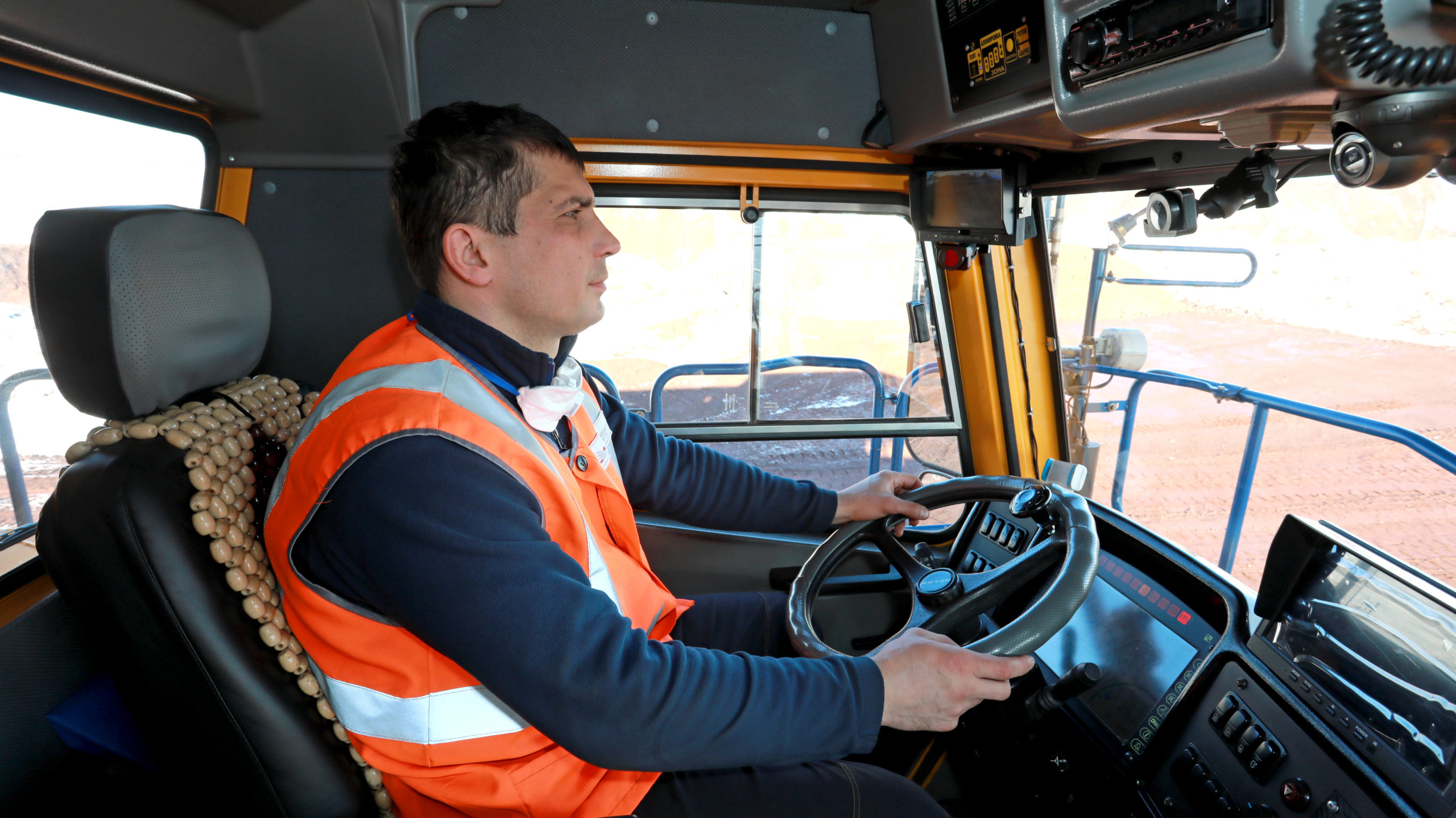
Pentingnya Manajemen Fatigue di Perusahaan Tambang dan Regulasi Kecukupan Jam Tidur

Fatigue is a pervasive and dangerous issue in the mining industry. The demanding nature of mining work, characterized by long hours, physically strenuous tasks, and often harsh environmental conditions, makes workers highly susceptible to fatigue. This article explores the dangers of fatigue in mining operations and presents SmartSafety, an intelligent solution designed to prevent fatigue-related accidents.
Understanding Fatigue in the Mining Industry
Definition of Fatigue
Fatigue is a state of physical and mental exhaustion that significantly reduces a person’s ability to perform tasks safely and effectively. It is often caused by prolonged periods of work, inadequate rest, and insufficient sleep. In the mining industry, fatigue can result from extended shifts, night work, and the physical demands of the job.
Causes of Fatigue in Mining
Long Working Hours:
Miners often work extended shifts that can last up to 12 hours or more. These long hours, combined with repetitive and physically demanding tasks, contribute to fatigue.
Shift Work:
Many mining operations require 24/7 production, necessitating shift work, including night shifts. Working irregular hours disrupts natural sleep patterns and can lead to chronic fatigue.
Physically Demanding Tasks:
The nature of mining work involves heavy lifting, operating machinery, and navigating challenging terrain, all of which are physically taxing and contribute to fatigue.
Harsh Working Conditions:
Miners often work in extreme environments, including high temperatures, humidity, and exposure to dust and noise. These conditions exacerbate physical and mental strain.
The Dangers of Fatigue in Mining
Reduced Cognitive Function
Fatigue impairs cognitive functions, including decision-making, attention, and reaction times. In a mining environment, where quick and accurate decisions are crucial, impaired cognitive function can lead to serious mistakes and accidents.
Increased Risk of Accidents
Fatigue significantly increases the risk of accidents in the workplace. Fatigued workers are more likely to make errors, misjudge situations, and react slower to hazards. In mining, where machinery, heavy equipment, and hazardous materials are involved, the consequences of accidents can be severe, including injury or death.
Decreased Productivity
Fatigue affects workers’ efficiency and productivity. Fatigued miners work slower, take longer to complete tasks, and are more prone to making errors that require rework. This decreases overall productivity and can impact the profitability of mining operations.
Health Implications
Chronic fatigue can lead to serious health issues, including cardiovascular problems, musculoskeletal disorders, and mental health conditions such as depression and anxiety. Ensuring that miners get adequate rest is essential for their long-term health and well-being.
Introducing SmartSafety: An Intelligent Solution
To combat the dangers of fatigue in mining, we have developed SmartSafety, a comprehensive system designed to prevent fatigue-related accidents and ensure that workers are fit to work.
Advanced IoT and Wearable Technology
SmartSafety leverages advanced IoT (Internet of Things) and wearable technology to monitor workers’ physical and mental states in real time. Wearable devices track vital signs such as heart rate, body temperature, and activity levels, providing continuous data on workers’ conditions.
Real-Time Monitoring and Alerts
The system provides real-time monitoring and alerts to both workers and supervisors. If the data indicates that a worker is becoming fatigued, SmartSafety sends immediate alerts, allowing for timely interventions. This proactive approach helps prevent accidents before they occur.
Sleep Monitoring and Analysis
SmartSafety includes sleep monitoring features that track workers’ sleep patterns and analyze their sleep quality. By ensuring that workers get sufficient rest, the system helps reduce the risk of fatigue. The data collected can be used to adjust work schedules and provide recommendations for improving sleep hygiene.
Fit-to-Work Assessments
Before starting their shifts, workers undergo fit-to-work assessments using SmartSafety. These assessments evaluate their readiness to perform tasks safely based on their physical and mental state. If a worker is deemed unfit to work due to fatigue, alternative arrangements can be made, such as providing additional rest or assigning less strenuous tasks.
Data-Driven Insights
The system collects and analyzes large amounts of data, providing valuable insights into patterns of fatigue and potential risk factors. This information helps mining companies develop targeted strategies to mitigate fatigue and enhance overall safety.
Benefits of Using SmartSafety in Mining
Improved Safety and Reduced Accidents
By monitoring workers’ conditions in real time and providing timely alerts, SmartSafety significantly reduces the risk of fatigue-related accidents. This leads to a safer work environment and protects workers from harm.
Enhanced Productivity
With SmartSafety, workers are more likely to be alert and focused, improving their productivity and efficiency. The system helps ensure that tasks are completed accurately and on time, contributing to the overall success of mining operations.
Better Health and Well-Being
SmartSafety’s emphasis on adequate rest and sleep quality promotes better health and well-being for miners. By preventing chronic fatigue and associated health issues, the system helps maintain a healthier and more satisfied workforce.
Cost Savings
Reducing accidents and improving productivity through SmartSafety can lead to significant cost savings for mining companies. Lower accident rates mean fewer compensation claims, medical expenses, and downtime. Additionally, enhanced productivity contributes to higher profitability.
Challenges and Implementation
Initial Investment
Implementing SmartSafety requires an initial investment in technology and infrastructure. However, the long-term benefits in terms of improved safety, productivity, and cost savings outweigh the initial costs.
Training and Adoption
To effectively implement SmartSafety, companies need to provide training to workers and supervisors on how to use the system. Ensuring widespread adoption and buy-in from all stakeholders is crucial for the system’s success.
Data Privacy and Security
Collecting and analyzing data on workers’ conditions raises concerns about privacy and security. It is essential to have robust data protection measures in place to safeguard workers’ information and ensure compliance with privacy regulations.
Fatigue poses significant dangers in the mining industry, leading to accidents, reduced productivity, and long-term health issues. SmartSafety offers an intelligent solution to prevent fatigue-related accidents by leveraging advanced IoT and wearable technology for real-time monitoring and alerts.
By ensuring that workers are fit to work and providing data-driven insights, SmartSafety enhances safety, productivity, and overall well-being in mining operations. Investing in such innovative solutions is crucial for creating a safer and more efficient mining industry, ultimately protecting the valuable asset of every company—their workers.

Pentingnya Manajemen Fatigue di Perusahaan Tambang dan Regulasi Kecukupan Jam Tidur

Bahaya Kelelahan di Lingkungan Kerja: Faktor Penyebab dan Solusinya

Kecelakaan Kerja Akibat Fatigue: Pengertian, Penyebab, dan Solusi Pencegahannya

Fatigue Management System: Pengertian, Manfaat, dan Alat Pendukung


Pentingnya Manajemen Fatigue di Perusahaan Tambang dan Regulasi Kecukupan Jam Tidur

Bahaya Kelelahan di Lingkungan Kerja: Faktor Penyebab dan Solusinya

Kecelakaan Kerja Akibat Fatigue: Pengertian, Penyebab, dan Solusi Pencegahannya

Fatigue Management System: Pengertian, Manfaat, dan Alat Pendukung
